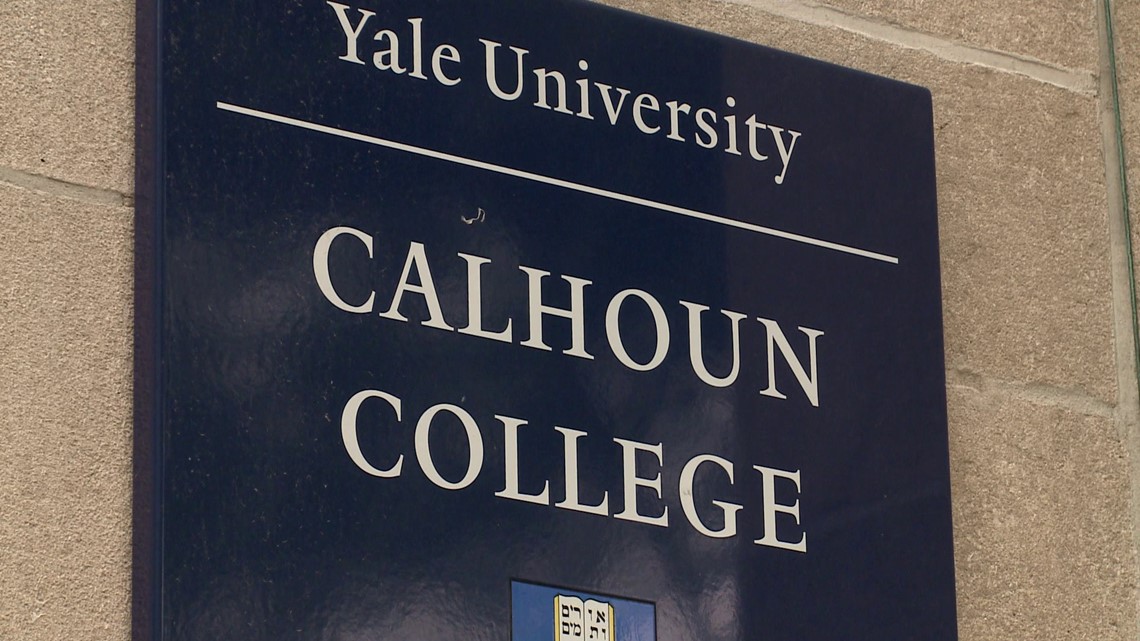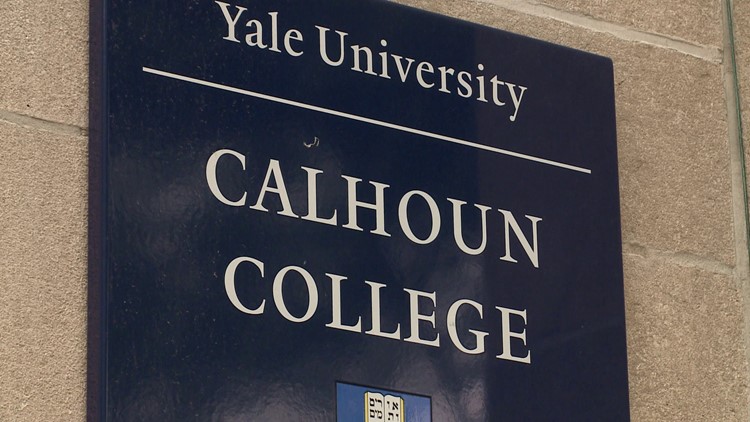NEW HAVEN – President Peter Salovey of Yale University announced Saturday that Calhoun College will be renamed to Grace Hopper College.


John C. Calhoun, who attended Yale in the early 1800’s, served the United States as Vice President to President John Quincy Adams. He also served as Secretary of State, Secretary of War, and a U.S. Senator.
He also left behind a legacy of white supremacy, and advocated ardently for slavery.
In February, Yale University began to mull over whether to change the name of Calhoun College, the decision having to be made by Yale’s governing body, the Yale Corporation. Then, they were gathering names it might have considered for Calhoun College and two new residential colleges Yale is planning.
Then, in April, Yale University had decided to keep the name for Calhoun College. Yale had said it was to “teach and confront the history of slavery in the United States.”
That decision sparked protests on campus, students angry over the decision. “I think that it’s ridiculous that Calhoun should remain as a reminder of slavery as if some of us have forgotten,” said Maya Jenkins, a Yale Sophomore who helped organize the protest.
Hundreds more students protested the school’s president Thursday night. According to the Yale Daily News, University President Peter Salovey faced students in a town hall to discuss the decision to keep the name.
In July of 2016, a Yale University worker destroyed a stained glass window depicting slaves in a cotton field. The working, Corey Menafee, was arrested though Yale did not press charges. “I destroyed that image, I probably shouldn’t have,” Menafee said. “It’s the 21st century, shouldn’t have to see that.” Menafee, who is black, resigned and apologized. Menafee’s attorney, Patricia Kane, says the terms of an agreement that would return him to Yale are still being discussed after Yale offered him a position back at the University.
Originally, the school said it had already planned on removing the window, though it was meant to be kept for future study and contextual exhibition. Later on in the day the school acknowledged that wasn’t true, and the decision to remove the windows came after incident.
By August, President Salovey said that he would appoint a new committee to develop guidelines for proposals to remove historical names from university buildings or spaces, including for Calhoun College.
“We are fortunate to have faculty members with relevant expertise that can be brought to bear on the renaming question. This new committee will draw upon their knowledge in a more systematic way,” he wrote, adding that the committee will take into account staff, alumni and student opinions on the topic as well.
Since then, a couple protests have popped as recent as Friday calling on Yale to change the name of Calhoun College.
President Peter Salovey sent a letter out to the Yale Community Saturday, detailing the change and the need for it, as well as the need to not erase history from the University.
“This decision overrides me announcement in April of last year that the name of Calhoun College would remain. At that time, as now, I was committed to confronting, not erasing, our history. I was concerned about inviting a series of name changes that would obscure Yale’s past.”
President Salovey says that the committee that was formed in August, named the Committee to establish Principles on Renaming, studied similar conversations about naming and commemoration that have arisen in recent years at institutions like Georgetown University, Harvard Law School, Princeton University, and the University of Texas at Austin.
The committee came up with a guideline that was to help guide any consideration of renaming. First was if the namesake’s legacy conflicted with the university’s mission, second if the legacy was contested during the namesake’s lifetime, third the reasons the university honored that person, and fourth whether the building that was named plays a substantial role in forming a community at Yale.
The President said in a statement:
“It is not clear to me, too, that the name of Calhoun College must change. Yale has changed magnificently over the past 300 years, and will continue to evolve long after our time; today we have the opportunity to move the university forward in a way that reinforces our mission and core values.”


Grace Hopper attended Yale in the 1930’s, and went on to become a math teacher at Vassar for nearly a decade before enlisting in the U.S. Navy where she used her mathematical knowledge to fight Fascism during World War II. She was a collaborator in the earliest computers. She made her greatest contributions in the realm of software. Grace Hopper pioneered the development of word-based computer languages, and she was instrumental in developing COBOL, the most widely used computer language in the world by the 1970’s.
Grace Hopper retired as a rear admiral at the age of 79, the oldest serving officer in the U.S. armed forces at the time. She is the recipient of Yale’s Wilbur Lucius Cross Medal, the National Medal of Technology, and the Presidential Medal of Freedom, the nation’s highest civilian honor.
President Salovey said in a statement:
“Today, her principal legacy is all around us—embodied in the live-enhancing technology she knew would become commonplace. Grace Murray Hopper College thus honors her spirit of innovation and public service while looking fearlessly to the future.”




